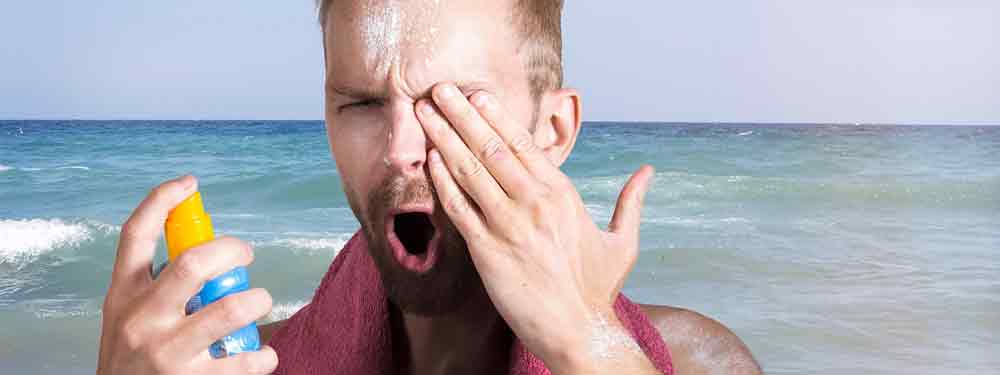The best protection from sun damage is to avoid the sun altogether. But that’s not usually practical. And even with all the sunglasses, sun hats, and UPF clothing in the world, you’re still going to need a second line of defense. That’s where sunscreen comes in.
For many of us, this is where the questions begin: How much sunscreen do I need? How often do I need to reapply it?
Below, the answers to these questions and other sunscreen tips.

How much sunscreen should you be using?
It takes about one liquid ounce to sufficiently cover most swimsuit-clad adult bodies. This amount equates to roughly two tablespoons.
This amount can also include the sunscreen you apply to your face. Where sun protection is concerned, face sunscreens and “regular” sunscreens are the same. That said, if you apply face sunscreen separately, a quarter-size amount of liquid sunscreen will provide proper coverage for your face, neck, and ears.
Stick and spray sunscreens may seem like a convenient alternative to slathering lotion all over your face and body by hand. But here’s the thing: They still need to be rubbed in – a step that’s all too often overlooked.
Both can also be tricky to measure. The American Academy of Dermatology Association (AADA) recommends making “four passes back and forth” over every part of your body with a stick sunscreen, and then rub it all in by hand. With spray sunscreens, the AADA suggests holding the nozzle close your skin and spraying until the skin glistens. Right after spraying, rub in the sunscreen – even if the directions say there’s no reason to do so.
To avoid inhaling particles, which could pose a health risk, apply a spray sunscreen in a well-ventilated area. And never spray directly into your face; instead, spray the sunscreen onto your hands, and then rub it in.

Don’t forget the tops of your feet and your ears. Researchers have reported they typically receive the worst sunscreen protection. Their findings also suggest that, whenever possible, it’s best to have someone else apply sunscreen to your back than to try to do it yourself.
When do you need to apply (and reapply) sunscreen?
Sunscreen needs time to soak in, so it’s best to apply it before you head outside – at least 15 to 20 minutes prior to sun exposure.
And no matter which kind of sunscreen you use, or what its SPF rating is, you need to make sure you reapply it all over after you’ve been in the water, after any sweat-inducing activity, or after one to two hours – whichever comes first.
If you need a more structured approach, here’s a two-step strategy determined by researchers who reviewed several studies on sunscreen application:
- Apply the first coat 15 to 20 minutes prior to sun exposure.
- Apply the second coat within your first hour of sun exposure. (You can set a timer on your phone to remind you to reapply.)
Applying sunscreen on kids
Few acts as a parent are as frustrating as trying to smear sunscreen on a child who wants nothing to do with it.
If a kid is old enough to apply their own sunscreen, keep this in mind: A study of 87 children (between the ages of 5 and 12) found that kids applied the most sunscreen on themselves when they used a pump to dispense it versus when they used a squeeze bottle or a roll-on.
For kids who are especially averse to sunscreen, consider using a tool that can make application more pleasant, like a makeup or foundation brush to “paint” the lotion on the skin before rubbing it in.
There are also products designed specifically for sunscreen application, such as this one by Solar Buddies, which dispenses sunscreen directly onto your skin via its roll-on sponge applicator.
These tips might not make the application and reapplication process completely painless, but they should go a long way toward protecting their skin – and your sanity.



 How To Find the Right Sunscreen for Your Acne-Prone Skin
How To Find the Right Sunscreen for Your Acne-Prone Skin